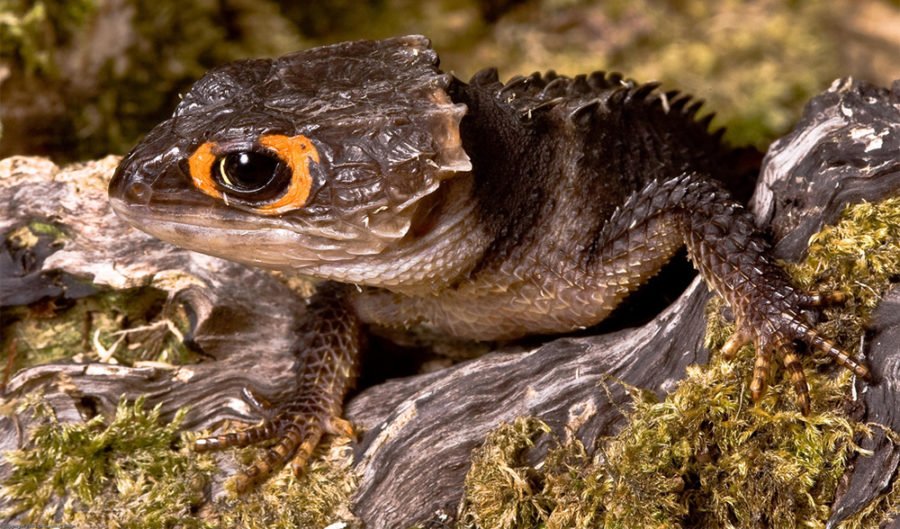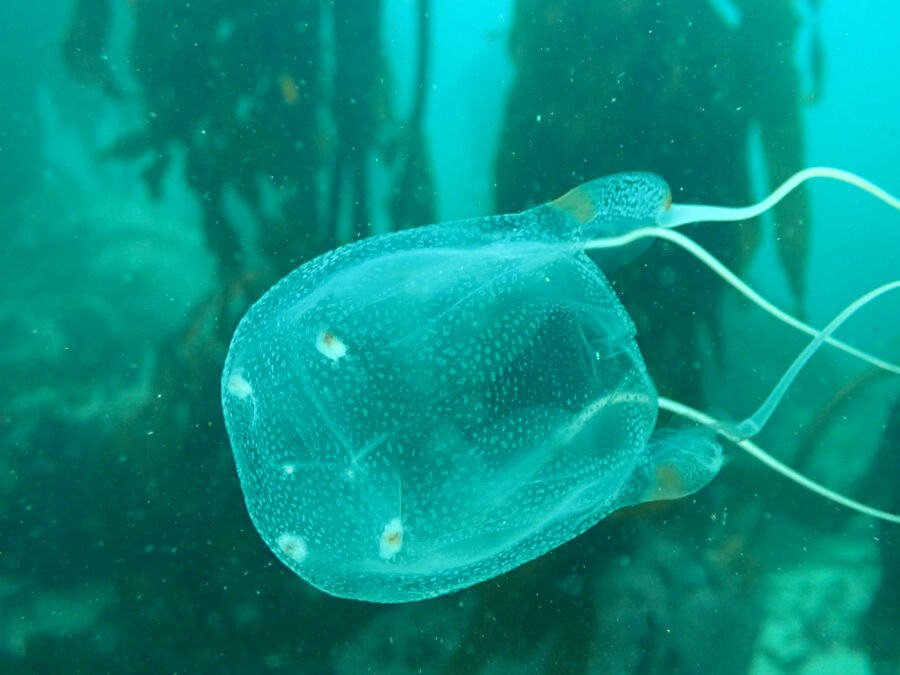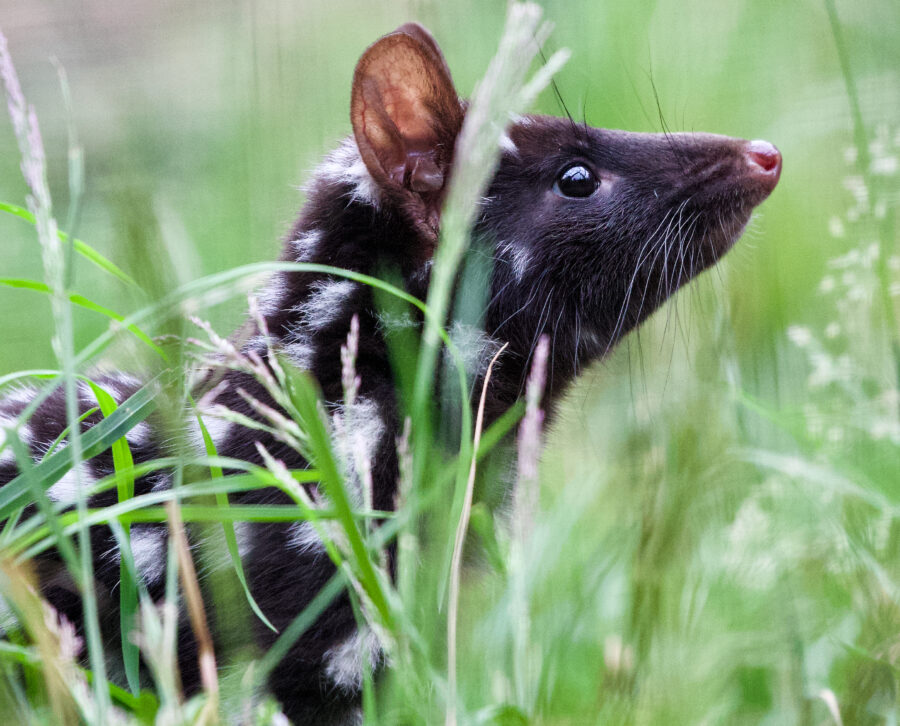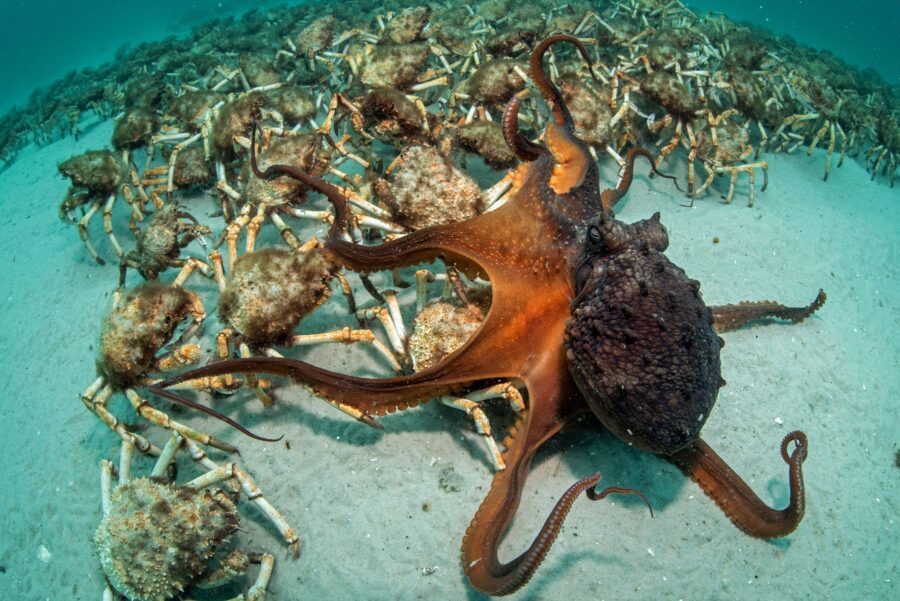Red-eyed crocodile skink

Bec Crew
Bec Crew

WITH BEAUTIFUL RED or orange rings running around their big, black eyes, the red-eyed crocodile skink (Tribolonotus gracilis) is quite the charmer.
Native to New Guinea and parts of Indonesia and the Solomon Islands, they’ve got the thick, leathery skin, large bony scales, and creamy underbelly of a crocodile, but at no more than 25 cm long, they lack the bulk and mouth full of terrible teeth of their more intimidating relatives.
Red-eyed crocodile skinks are found in dense, tropical forests or humid bush areas near water – they’re decent swimmers – and only come out at night or in the early morning to hunt for food. They’re super shy, which makes it tough to know much about them, but what we do know paints a pretty intriguing picture.
Crocodile skinks yelp for help
They belong to the Tribolonotus genus of crocodile skinks, of which there are eight known species. All of them are similarly armoured and greyish coloured, and they’re one of just two types of skink in the world known to vocalise when they’re threatened.
It’s a high-pitched yelping sound, sometimes followed by a bout of vomiting and tail shedding, which makes a pretty disarming combination. But if that doesn’t work, they’ll freeze or play dead, depriving their would-be predators of any kind of compelling fight.
Compared to most other lizards, telling male crocodile skinks apart from the females is an absolute breeze. Their genitals are housed internally, so they’re not much help, but the males have these curious little raised ‘volar pores’ on the base of their back feet, which the females lack. It’s not clear exactly what these pores do, but it’s thought that they could allow the males to leave territorial scent marks around for each other.
As for the females, they have but a single working oviduct, so can produce and raise only one egg at a time. This means mother crocodile skinks are fiercely protective of their one egg, spending most of their time curled up around it like a tiny dragon protecting its treasure chest.




